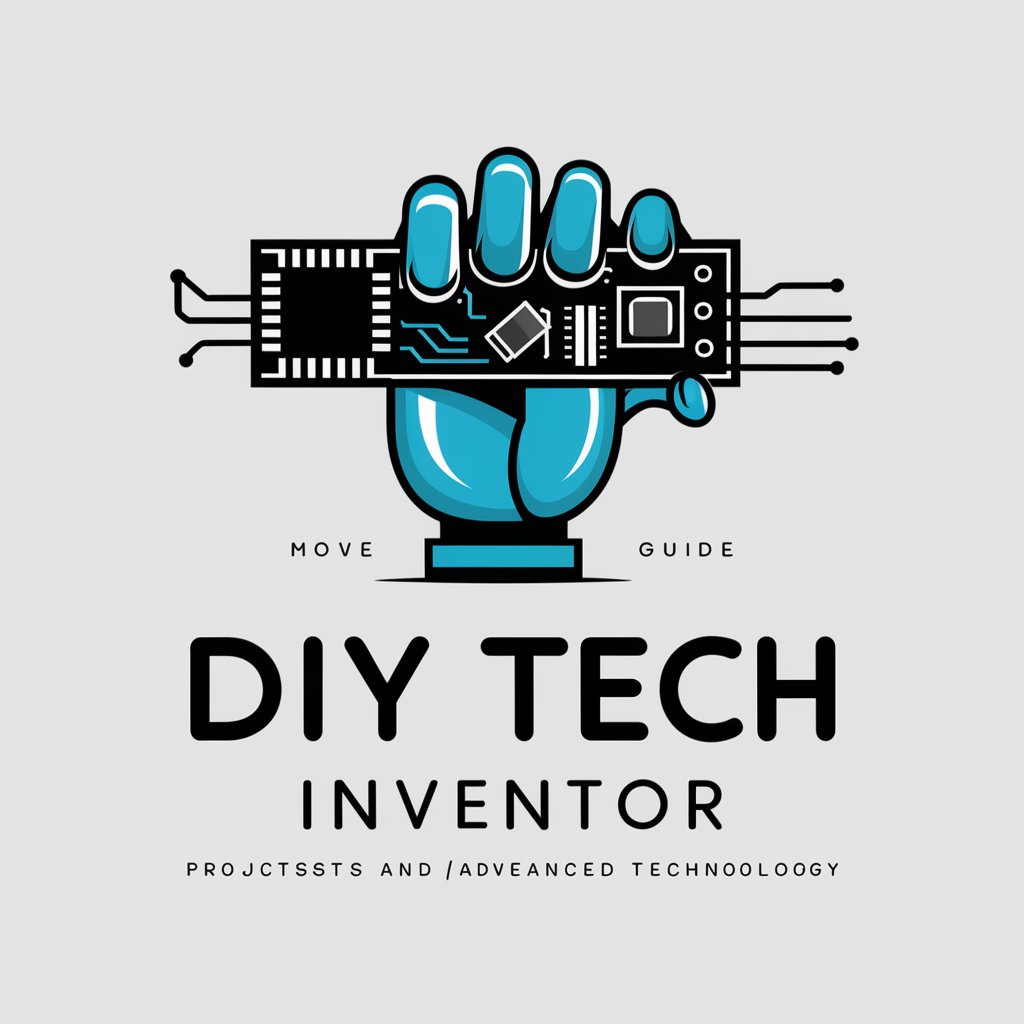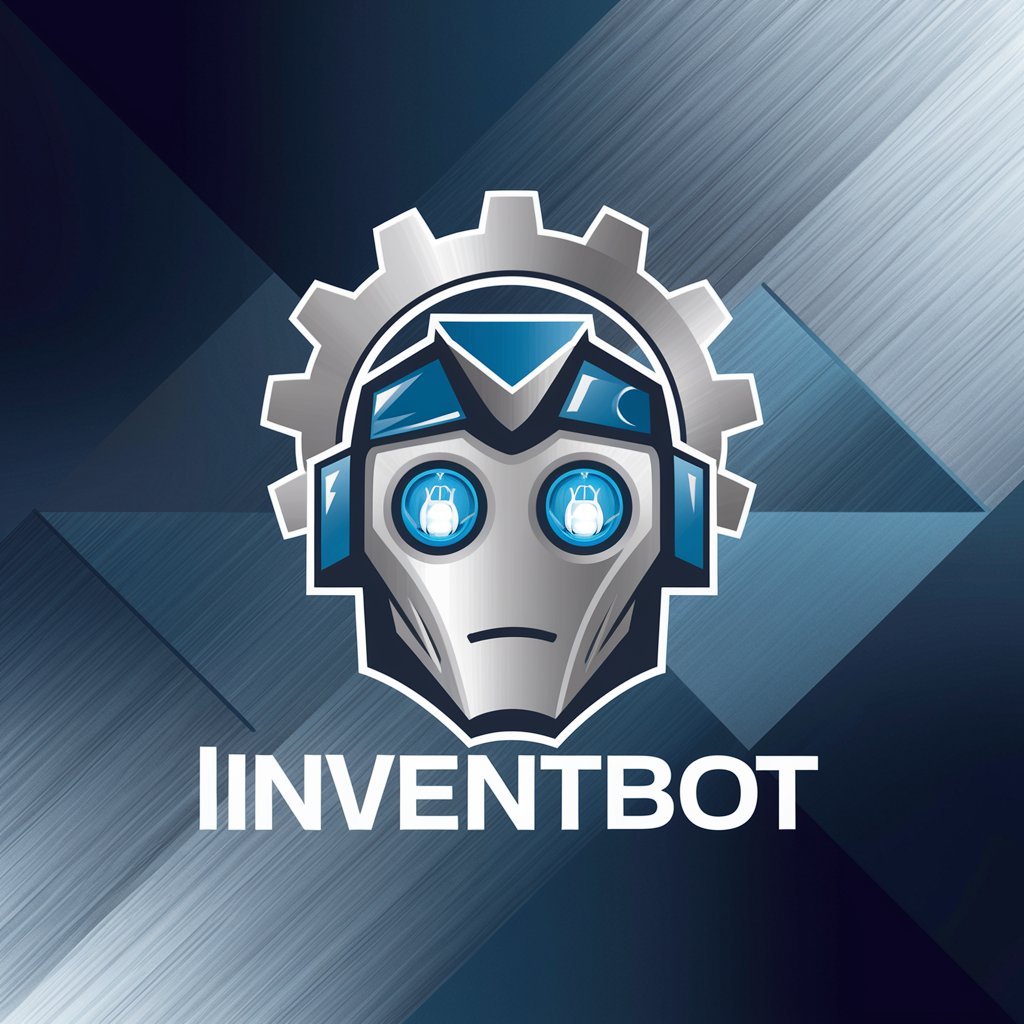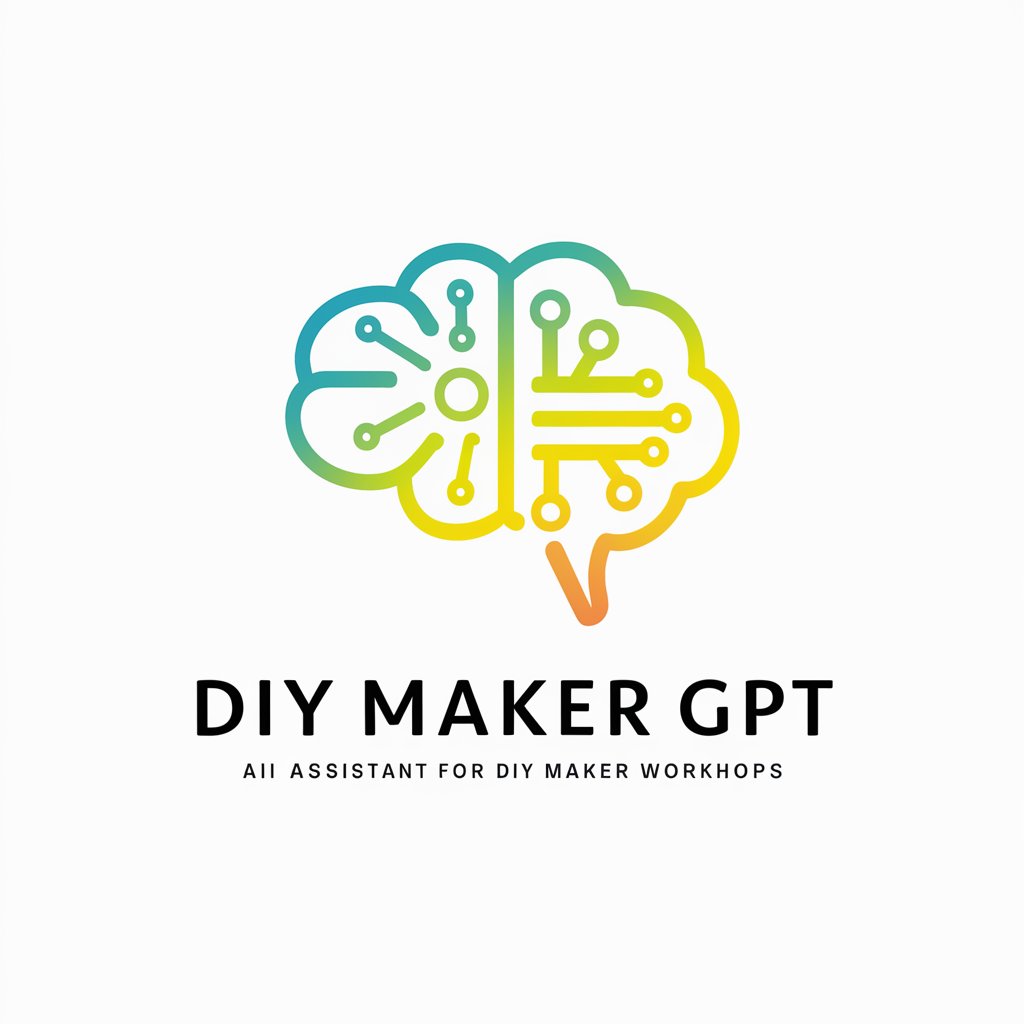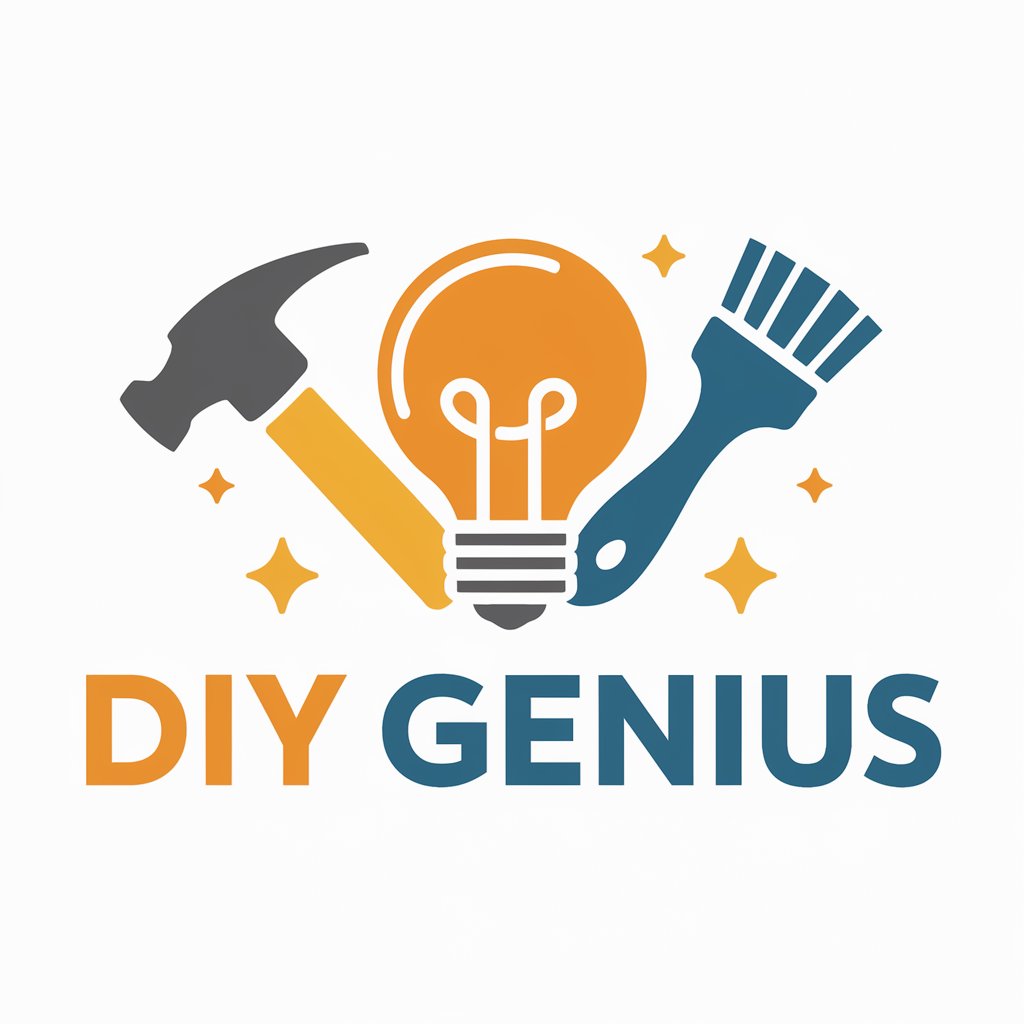
DIY Tech Inventor - DIY Tech Projects Guide

Welcome! Ready to build your next tech project?
Empower your creativity with AI-powered tech DIYs
What's a fun beginner tech project I can start with?
Can you help me design a DIY smart home device?
How do I get started with programming microcontrollers?
What are some innovative ways to reuse old electronics in new projects?
Get Embed Code
About DIY Tech Inventor
DIY Tech Inventor is designed as a comprehensive guide and assistant for technology enthusiasts who are passionate about building and creating their own devices and systems. It operates with the aim of demystifying the complexities of technology projects, making them accessible and achievable for individuals with varying levels of expertise. From conceptualizing ideas to the actual building and programming of devices, DIY Tech Inventor supports users through every step of their project. It not only provides detailed instructions and explanations on electronic and programming fundamentals but also offers troubleshooting advice, promotes safe practices, and encourages the reuse of materials. Examples of scenarios include guiding a beginner through the process of building their first simple robot, assisting an intermediate hobbyist in programming an IoT device, or advising an advanced user on optimizing the performance of a custom-built drone. Powered by ChatGPT-4o。

Main Functions of DIY Tech Inventor
Project Conceptualization
Example
Guiding a user in refining their idea for a smart home lighting system, considering factors like cost, complexity, and functionality.
Scenario
A user has a vague idea of automating their home's lighting but doesn't know where to start. DIY Tech Inventor helps by suggesting a range of technologies and approaches, such as using Arduino or Raspberry Pi, and considering factors like wireless control and energy efficiency.
Building Instructions
Example
Providing step-by-step guidance for assembling a weather station using off-the-shelf components and custom parts.
Scenario
A hobbyist wants to build a weather station to monitor temperature, humidity, and air quality. DIY Tech Inventor offers detailed building instructions, including selecting sensors, wiring diagrams, and casing fabrication, ensuring the user can successfully complete the project.
Programming Guidance
Example
Explaining how to write and debug code for a DIY robotic arm, including interfacing with sensors and actuators.
Scenario
An enthusiast is building a robotic arm for educational purposes and needs help with programming it to perform specific tasks. DIY Tech Inventor provides code snippets, debugging tips, and advice on integrating with different sensors and actuators.
Troubleshooting and Optimization
Example
Advising on diagnosing connectivity issues in a DIY smart home network and optimizing its performance.
Scenario
A maker is experiencing intermittent connectivity issues in their DIY smart home setup. DIY Tech Inventor suggests troubleshooting steps to identify the problem, such as checking network configurations and signal strength, and offers solutions to enhance system reliability and performance.
Ideal Users of DIY Tech Inventor Services
Beginner Hobbyists
Individuals new to the world of DIY tech projects who are seeking guidance to start their journey. They benefit from step-by-step instructions, fundamental electronic and programming education, and encouragement to experiment and learn through building.
Intermediate Enthusiasts
Hobbyists with some experience who are looking to tackle more complex projects or refine their skills. They gain from advanced project ideas, optimization techniques, and troubleshooting support.
Advanced Makers
Experienced individuals working on cutting-edge or highly customized tech projects. They appreciate detailed technical advice, performance optimization tips, and innovative solutions to challenging problems.
Educators and Students
Teachers and learners in STEM fields who use DIY projects as educational tools. They benefit from the comprehensive explanations, project ideas suitable for different skill levels, and the opportunity to apply theoretical knowledge in practical settings.

How to Use DIY Tech Inventor
Start Your Journey
Begin by visiting yeschat.ai for a complimentary trial, with no need for a login or a ChatGPT Plus subscription.
Explore Project Ideas
Navigate through a variety of DIY tech project ideas, suitable for all skill levels, from beginners to advanced enthusiasts.
Select Your Project
Choose a project based on your interest and skill level. Consider starting with simpler projects if you are a beginner.
Gather Materials
Collect all necessary components and tools for your project. The Inventor provides a detailed list of materials for each project idea.
Start Building
Follow the detailed step-by-step instructions provided for your selected project. Don’t hesitate to ask for clarifications or troubleshooting advice.
Try other advanced and practical GPTs
Innovation Explorer
Bridging Ideas with Reality through AI

ESL Malaysia SpeakWise 2.1 - Practise English!
AI-Powered English Mastery

China CPA Exam Guide
AI-powered CPA Exam Mastery

Homework Assistant
Empowering Your Learning with AI

Fitness Diet - Your Calories with a Photo
Empowering your diet with AI precision.

Super Lawyer
Empowering Legal Research with AI

Digital Content Strategist
Empower Your Content with AI

JiaJu SheJi
Revolutionizing Interior Design with AI

Nutri Chef
Empowering Your Diet with AI

Cosmic Oracle
Navigate the cosmos with AI-powered wisdom.

Artistic Paws
Turn your pet's photo into AI-powered art

EDM Visualist DSIV
Crafting Dynamic Visuals for the Beat

Frequently Asked Questions about DIY Tech Inventor
What types of projects can I create with DIY Tech Inventor?
From simple LED circuits to complex IoT devices, DIY Tech Inventor supports a wide range of projects including home automation, wearable technology, and robotics.
Do I need any prior experience in electronics or programming?
No prior experience is necessary! DIY Tech Inventor caters to all skill levels, offering projects and tutorials that start from the basics and gradually increase in complexity.
How does DIY Tech Inventor assist in troubleshooting projects?
DIY Tech Inventor provides troubleshooting tips for common issues, detailed explanations of project components, and personalized advice upon request.
Can I use recycled materials for my projects?
Absolutely! DIY Tech Inventor encourages the use of recycled or repurposed materials whenever possible, aligning with sustainable practices and creativity.
Is there a community or forum where I can share my projects?
While DIY Tech Inventor itself doesn’t host a forum, it encourages sharing your projects on social media platforms and relevant online communities to inspire others and get feedback.





